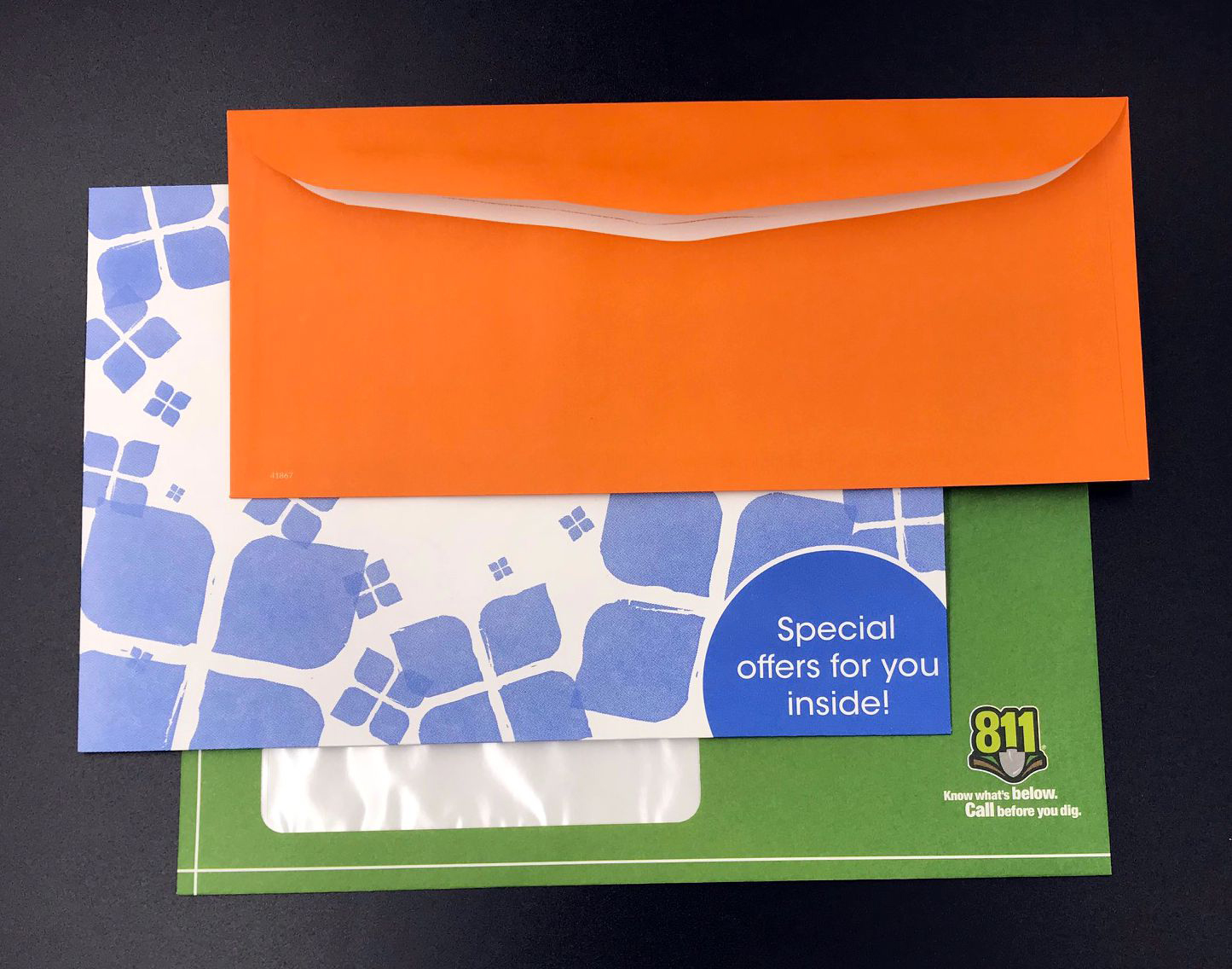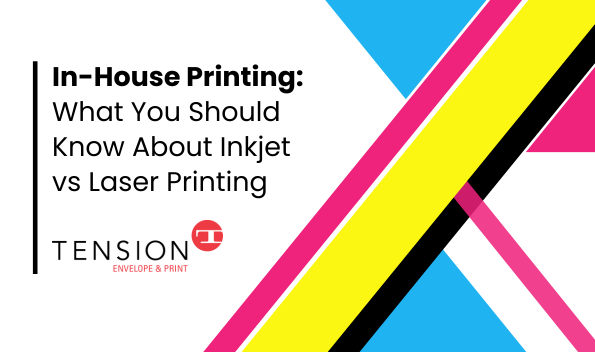Enhanced flexo is often used as a bridge from a more expensive litho envelope to a lesser priced, yet viable, flexo-printed envelope. Yet when you are comparing enhanced flexo bids from two different envelope manufacturers, it is crucial you look at how each define enhanced flexo. The definition varies broadly across the industry.
Let’s Start at the Beginning: Flexographic Printing
We’ve moved far beyond the bad “rubber stamp” reputation of old flexographic printing. Today, flexo printing is a solid choice for many of your envelopes. It’s a safe bet for sans-serif fonts and simple images; spot-color or 4-color process printing that doesn’t require tight registration; and full color wash using light and medium colors.
However, when very fine and tight registration is needed, particularly with logos, a more robust flexographic printing technique, or enhanced flexographic printing, can be an ideal option.
Kick it Up a Notch: From Flexo to Enhanced Flexo
Here’s where things can get interesting. How is enhanced flexo defined? When does printing stop being flexography and start becoming enhanced flexo? Well, it depends on who you ask. There is no precise definition.
Here are a few methods that can improve your typical flexo printing:
- Line screens. Normal flexo is frequently defined at 85 to 100 line screens. Enhanced flexo can be defined at 120 to 133 line screens.
- Reverse doctor blades. Using reverse doctor blades can keep your flexo print cleaner by scraping excess ink off plates. They help to mitigate splatter and keep registration tighter.
- Chambered doctor blade systems. These doctor blades provide an additional layer of precision. A chambered doctor blade system has more than one doctor blade. The blades are at different angles, and a “chamber” located between the blades helps keep ink away from your envelope.
- Central impression cylinders give tighter registration that can help improve registration and avoid excess trapping.
- Calendarized paper. Calendarized paper holds the ink better than standard paper, improving the final product which can appear to “enhance” your flexographic printing.
- CMYK Printing is frequently used in enhanced flexo to improve print quality over spot printing.
These are some of the things that help enhance the flexographic method over traditional flexo. They can improve flexographic printing to the point a manufacturer would move an envelope from flexo to “enhanced flexo.”
Your printing needs may dictate which levers the envelope manufacturer uses, so it’s important to ask what particular technique they are proposing and how it will impact the final product. We know that, as a whole, flexographic printing has improved. Yet there are multiple ways to “enhance” it even more, making it closer to litho.
Enhanced Flexo: The Gap is Closing
Today there are a variety of options to reach your goals. Litho costs are coming down. The gap between enhanced flexo and litho gets smaller each year. Ink, paper and plates get better.
Your Tension Associate is always available to work with you to find the best and most economical option.




